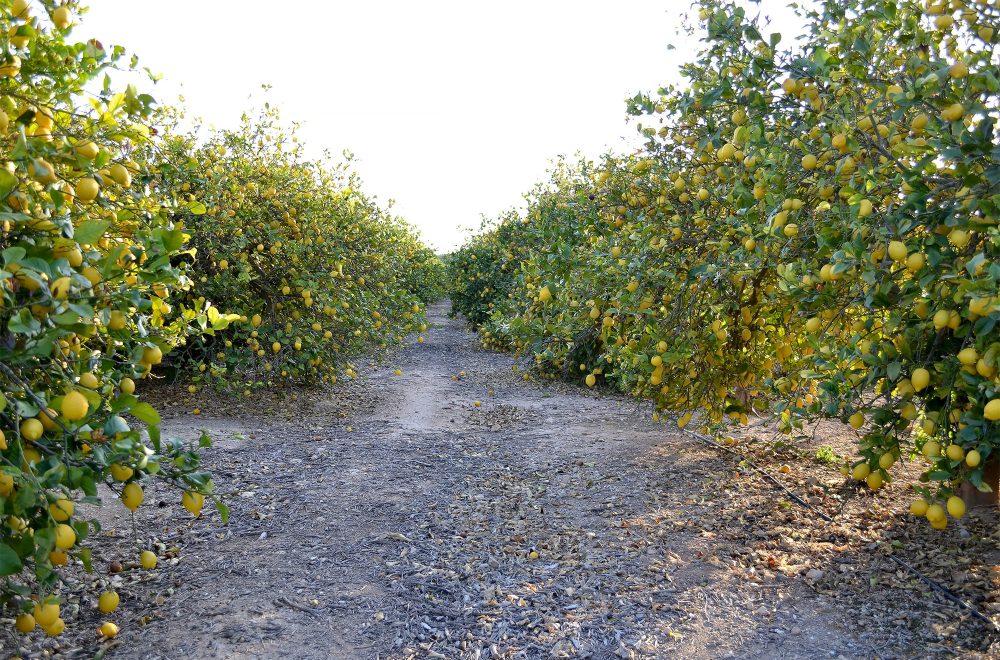Lemon farming has emerged as a promising agribusiness in Kenya, thanks to the fruit’s rising popularity among health-conscious consumers and its wide range of applications in food, beverages, and medicine. While lemons take 3–6 years to mature and bear fruit, their longevity and productivity make them an excellent investment for farmers looking to diversify their crops and boost income.
This guide explores all aspects of lemon farming in Kenya, from the ideal growing conditions and pest management to market opportunities and the immense health benefits of lemons.
Why Lemon Farming is Thriving in Kenya
Lemons belong to the citrus family and are well-suited to Kenya’s diverse climatic conditions. The fruit’s increasing demand is driven by its role in health and wellness, particularly as a rich source of Vitamin C and antioxidants. This makes lemon farming a lucrative opportunity for Kenyan farmers, especially as local and international markets continue to expand.
Best Areas for Lemon Farming in Kenya
Lemon farming thrives in areas with favorable climatic and soil conditions. Some of the most suitable regions include:
- Coastal Counties: Kilifi, Kwale, and Mombasa offer ideal temperatures and rainfall.
- Eastern Kenya: Arid and semi-arid areas like Machakos, Kitui, and Makueni are suitable, especially with irrigation.
- Rift Valley: Regions like Nakuru and Baringo provide fertile soils and moderate climates conducive to lemon farming.
Lemon Varieties Commonly Grown in Kenya
Kenyan farmers cultivate two main types of lemons:
- Acid Lemons:
- Lisbon: Known for its high juice content and strong acidic flavor.
- Eureka: Popular for its thin skin, high yield, and almost seedless fruits.
- Sweet Lemons:
- Meyer: A hybrid between lemon and orange, offering a sweeter taste.
- Ponderosa: A larger, sweeter variety suitable for specific markets.
Farmers should select varieties based on soil type, climate, and target markets.
Conditions Required for Lemon Cultivation
Successful lemon farming requires careful attention to ecological conditions, which directly impact yield and fruit quality:
- Rainfall: A minimum of 1,000mm annually, evenly distributed throughout the year.
- Soil: Fertile, well-drained soils with a pH of 6.0–6.5. The soil should also be rich in organic matter and well-aerated.
- Temperature: Optimal growth occurs in temperatures ranging from 20°C to 30°C.
- Sunlight: Lemons thrive in sunny locations sheltered from strong winds.
- Spacing: Trees should be spaced at 7m by 7m to allow for proper aeration and ease of maintenance.
Common Pests and Diseases in Lemon Farming
Like other crops, lemon trees are prone to pests and diseases. Proper management is essential to protect the crop and maximize profits.
Key Pests
- Fruit Flies: Damage fruits by laying eggs inside, reducing market value. Use bait traps or chemical control methods.
- Aphids and Thrips: Feed on leaves and stems, causing curling and discoloration. Neem-based solutions or insecticides can mitigate infestations.
- Mites and Black Flies: Affect the tree’s vigor and fruit quality. Regular monitoring is crucial.
- False Coddling Moths and Ants: These pests can be controlled by maintaining cleanliness and using traps or repellents.
Common Diseases
- Greening Disease: A bacterial infection that affects fruit quality and tree health. Managed by controlling psyllid vectors and using certified seedlings.
- Anthracnose and Leaf Spot: Cause spots on fruits and leaves, leading to premature leaf drop.
- Canker and Scab: Result in lesions on fruits, stems, and leaves, lowering the fruit’s marketability.
Control Measures
- Use organic or chemical pesticides as needed.
- Regularly prune trees to improve air circulation.
- Apply foliar sprays and fertilizers to strengthen tree resistance.
Planting and Care for Lemon Trees
Lemon trees can be propagated through seeds, grafting, or budding, with grafting being the most preferred method due to faster growth and higher yields.
Planting Guidelines
- Prepare planting holes measuring 60cm by 60cm.
- Mix topsoil with well-rotted manure and lime.
- Plant seedlings, ensuring the graft union remains above the soil.
- Water immediately and mulch around the base to retain soil moisture.
Maintenance Practices
- Irrigation: Water regularly, especially during dry seasons, to ensure consistent growth.
- Weeding: Keep the area around the trees weed-free to minimize competition for nutrients.
- Fertilization: Apply nitrogen, phosphorus, and potassium-rich fertilizers during key growth stages.
- Pruning: Remove dead or diseased branches to maintain tree health and structure.
Harvesting Lemons
Lemon trees typically begin to bear fruit 3–6 years after planting. Mature lemons are harvested manually to prevent bruising and maintain quality. Proper storage and handling are essential to preserve freshness, especially for export markets.
Yield Potential
- An acre can support approximately 130 lemon trees.
- Each tree produces up to 300 fruits annually, totaling around 39,000 lemons per acre.
- At Ksh 5 per lemon, farmers can earn roughly Ksh 195,000 per acre annually, making lemon farming a highly profitable venture.
Marketing Lemons in Kenya
The demand for lemons is steadily rising, driven by their use in food, beverages, and traditional medicine. Key market outlets include:
- Local Markets: Open-air markets, grocery stores, and supermarkets.
- Export Markets: Kenya exports lemons to countries in the Middle East and Europe, where demand for tropical fruits is high.
- Value Addition: Processing lemons into juice, oils, or concentrates offers additional revenue streams.
To succeed, farmers should focus on:
- Grading lemons based on size and quality.
- Partnering with cooperatives or marketing agencies to access larger markets.
- Exploring export certification for better prices.
Health Benefits of Lemons
Lemons are prized for their numerous health benefits, making them a staple ingredient in households and industries:
- Immune Boosting: High Vitamin C content enhances immunity.
- Digestive Aid: Helps alleviate indigestion and treat urinary tract infections.
- Skin Health: Lemon juice acts as a natural antiseptic for cuts and blemishes.
- Cancer Prevention: Antioxidants combat free radicals, reducing cancer risk.
- Heart Health: Helps regulate blood pressure and improve cardiovascular health.
Challenges in Lemon Farming
While lucrative, lemon farming in Kenya is not without challenges:
- High Initial Costs: Land preparation, seedlings, and irrigation systems require significant investment.
- Pests and Diseases: Managing infestations can be expensive and time-consuming.
- Market Access: Limited knowledge of export markets can hinder profitability.
- Climate Variability: Unpredictable weather patterns affect yields.
Farmers can mitigate these challenges by adopting sustainable farming practices, seeking extension services, and joining farmer cooperatives.
Lemon farming in Kenya holds immense potential for farmers willing to invest time and resources. With proper planning, pest management, and market strategies, farmers can reap substantial rewards from this evergreen venture. As global demand for lemons continues to rise, Kenyan farmers are well-positioned to capitalize on this golden opportunity.





